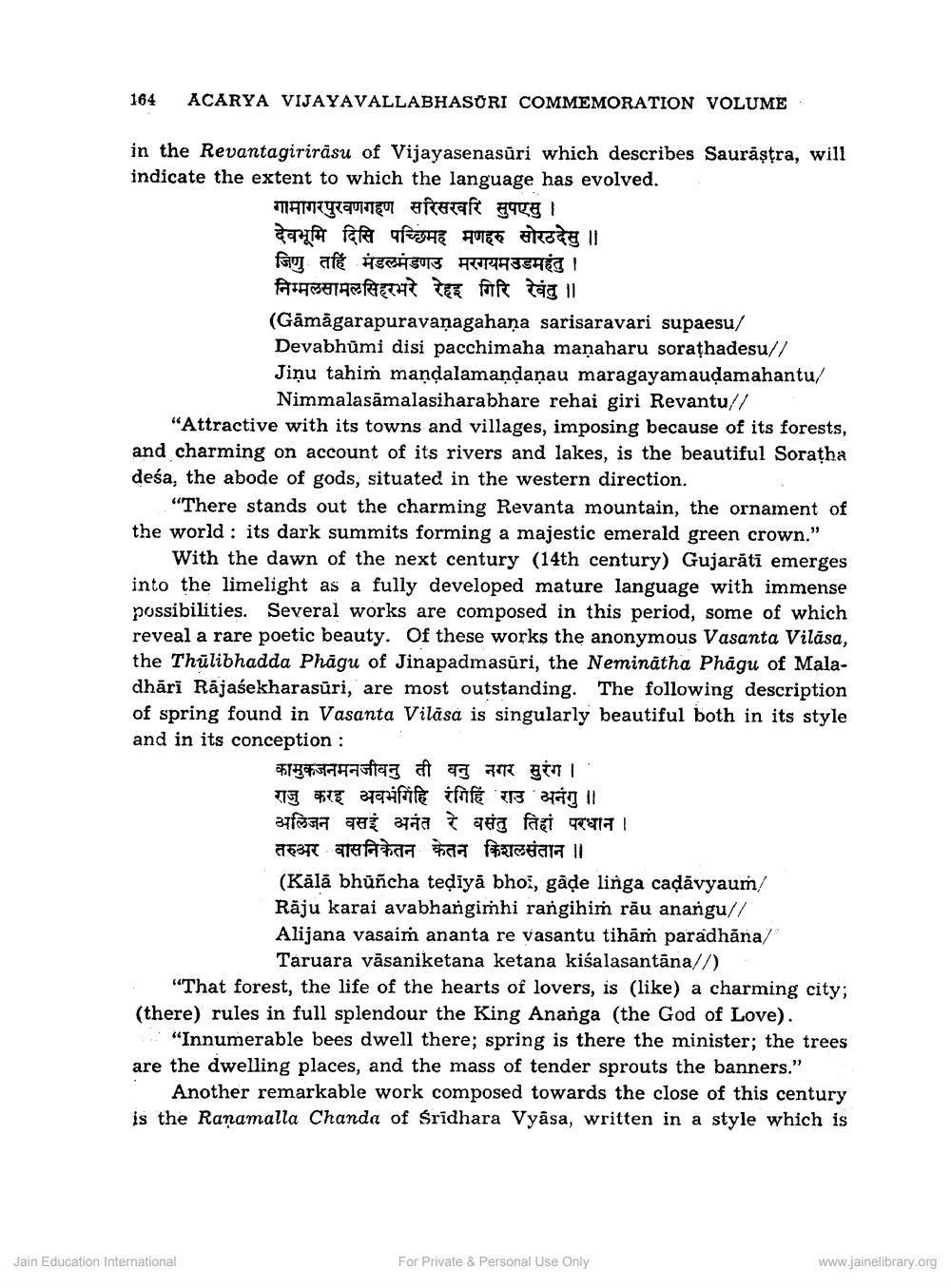Book Title: Historical Outline of the Languages of Western Indian Author(s): K B Vyas Publisher: Z_Vijay_Vallabh_suri_Smarak_Granth_012060.pdf View full book textPage 8
________________ 164 ACARYA VIJAYAVALLABHASŪRI COMMEMORATION VOLUME in the Revantagirirāsu of Vijayasenasūri which describes Saurāṣtra, will indicate the extent to which the language has evolved. गामागरपुरवणगहण सरिसरवरि सुपएसु । देवभूमि दिसि पच्छिमह मणहरु सोरठदेसु ॥ जिणु तहिं मंडलमंडणउ मरगयमउडमहंतु । निम्मलसामलसिहरभरे रेहइ गिरि रेवंतु ॥ (Gāmāgarapuravanagahana sarisaravari supaesu/ Devabhūmi disi pacchimaha manaharu sorathadesu// Jiņu tahim mandalamandaņau maragayamaudamahantu, Nimmalasāmalasiharabhare rehai giri Revantu// "Attractive with its towns and villages, imposing because of its forests, and charming on account of its rivers and lakes, is the beautiful Soratha deśa, the abode of gods, situated in the western direction. "There stands out the charming Revanta mountain, the ornament of the world : its dark summits forming a majestic emerald green crown." With the dawn of the next century (14th century) Gujarăti emerges into the limelight as a fully developed mature language with immense possibilities. Several works are composed in this period, some of which reveal a rare poetic beauty. Of these works the anonymous Vasanta Vilasa, the Thūlibhadda Phägu of Jinapadmasūri, the Neminátha Phagu of Maladhāri Rājasekharasūri, are most outstanding. The following description of spring found in Vasanta Vilása is singularly beautiful both in its style and in its conception : कामुकजनमनजीवनु ती वनु नगर सुरंग । " राजु करइ अवभंगिहि रंगिहिं राउ अनंगु ॥ अलिजन वसई अनंत रे वसंतु तिहां परधान । तरुअर बासनिकेतन केतन किशलसंतान ॥ (Kālā bhūñcha teļiya bhoi, gâde linga caļāvyaum/ Rāju karai avabhangimhi rangihim rău anangu// Alijana vasaim ananta re vasantu tihāṁ paradhāna/ Taruara vāsaniketana ketana kišalasantāna/) "That forest, the life of the hearts of lovers, is (like) a charming city; (there) rules in full splendour the King Ananga (the God of Love). "Innumerable bees dwell there; spring is there the minister; the trees are the dwelling places, and the mass of tender sprouts the banners." Another remarkable work composed towards the close of this century is the Ranamalla Chanda of Sridhara Vyāsa, written in a style which is Jain Education International For Private & Personal Use Only www.jainelibrary.orgPage Navigation
1 ... 6 7 8 9 10 11 12
